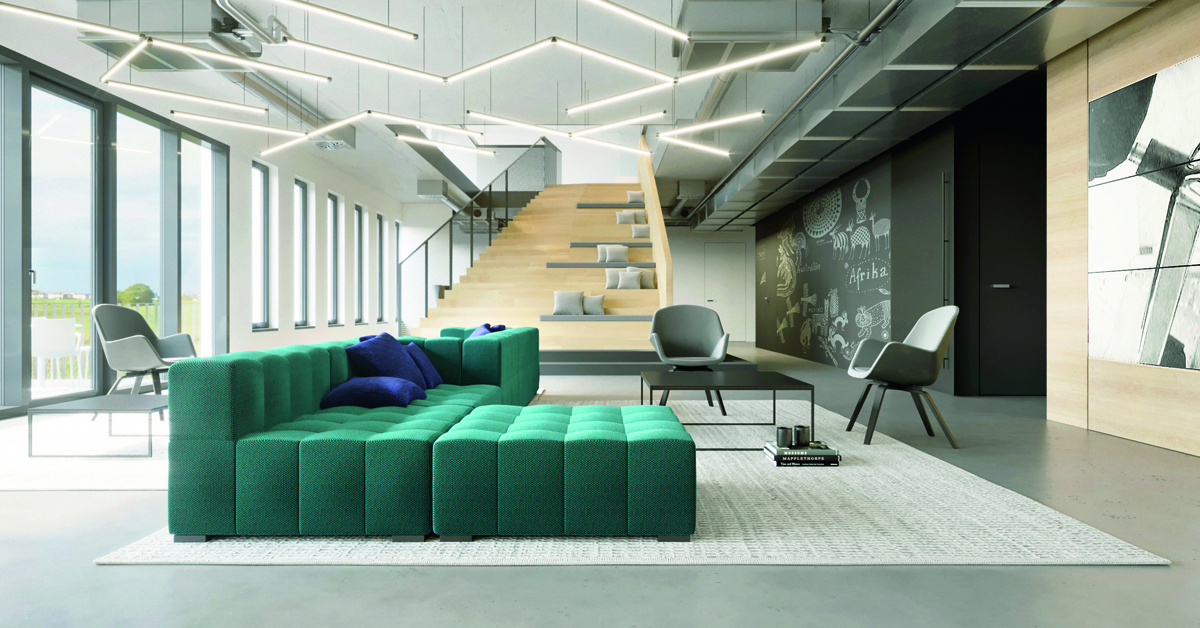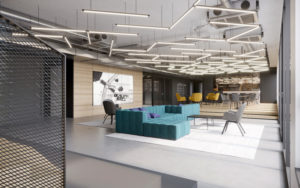Corporate campus. University flair in the office.
By Franz Gurtner, 03.03.2022

Management literature abounds with titles addressing the organisation of learning. The pivotal question here is how organisations should develop so they can be characterised by a capability to learn. One aspect is frequently neglected here: the spatial environment and its underestimated importance in supporting the ability to learn. Corporate campus is a new interior design concept that fosters creative collaboration – and thus shared learning.
While routine tasks will be automated more and more in the future, creative processes will be of much greater significance. The nucleus of attention will be on the innovative strength of learning organisations that manifest agile structures and are constantly in motion. In addition, this calls for meeting places that are more unconventional, emancipated from the classic desk. It involves the activation of areas and spatial zones in the office building that as yet have hardly been taken into account: underexposed central or peripheral zones, staircases, entrance areas, crossways and so on. One creative way of designing central zones is the corporate campus. Its design conjures up associations with a university campus: places that combine learning, work and the private and public spheres. Quite in the university style, unused spatial zones are converted not only into places for creative collaboration, but also for relaxed communication. The campus flair mellows the occasionally inhibiting character of formal meeting and conference rooms. The campus thus becomes a central meeting point and hub – whether informal one-on-one discussion or fully fledged event location. In design, anything goes – as long as it pleases: stepped rostrums are particularly popular, inviting you to linger but also ideal for presentations, lectures or briefings.
Upholstered furniture, lounge chairs, cafeteria chairs, bistro tables, sofas – there’s a long list of options for taking a relaxed break. Nonetheless, creative freedom is not an end in itself. It fosters a change in perspective, liberation from the desk concept, and stimulates creativity and initiative. If you need a break from working at your desk, the campus will give you plenty of scope to work elsewhere from time to time. Of course, the campus is also ideal for activities during breaks and social interaction. Depending on the situation, it can be a random meeting point as well as a coffee break hangout, etc. So the characteristic feature of this central hub is its vitality. In practice, however, employers frequently get nervous about too much easygoing conviviality, spatial freedom and reduced efficiency. Nevertheless, studies on activity-based working demonstrate the opposite: attractively designed encounter zones are beneficial for everyone. Innovation and creativity levels are enhanced when employees can avail of multiple and ideal opportunities for spontaneous encounters and conversations. Well-designed crossways and hubs offer more potential for success than many a complex team-building measure. But it’s important that the respective design matches the corporate philosophy. The corporate campus will thus come to be a core component of modern offices because it is fertile ground for New Work to flourish and reach fruition.





